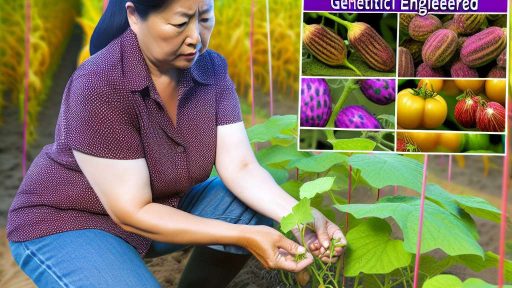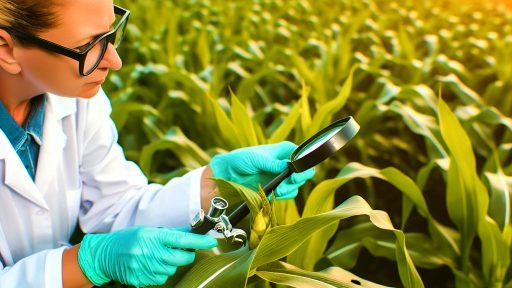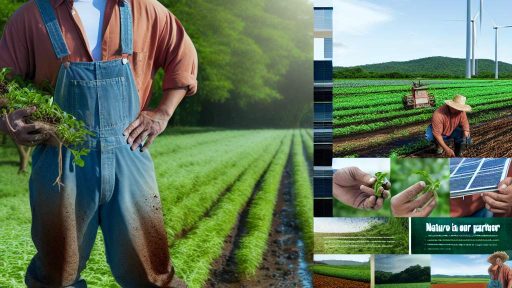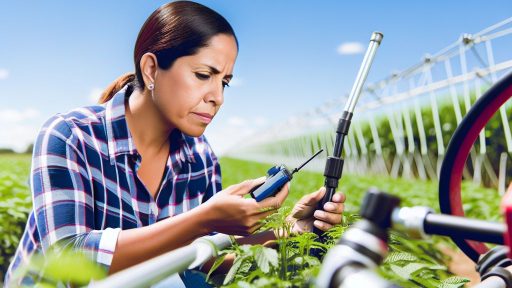Introduction to Sustainable Livestock Management and Its Importance
Sustainable livestock management focuses on practices that enhance productivity.
This approach ensures that livestock farming is environmentally friendly.
Moreover, it supports the welfare of animals and farmers alike.
The Role of Sustainability in Livestock Farming
Sustainability promotes responsible use of natural resources.
It helps maintain the ecological balance necessary for farming.
Consequently, this approach protects biodiversity and soil health.
Benefits of Sustainable Livestock Management
Sustainable practices can significantly improve farm productivity.
They reduce costs while enhancing the quality of livestock products.
Additionally, they foster resilience against climate change.
This contributes to food security and economic stability.
Implementing Sustainable Practices
Farmers can adopt various techniques for sustainability.
- Rotational grazing helps improve soil fertility.
- Integrating crops and livestock enhances resource efficiency.
- Using organic feed minimizes chemical exposure.
Measuring Success in Sustainable Livestock Management
Success in sustainable livestock management can be quantified.
Key performance indicators include animal health, productivity, and biodiversity.
Monitoring these factors helps farmers adapt and optimize their practices.
Community and Economic Impact
Sustainable livestock management benefits local communities.
Transform Your Agribusiness
Unlock your farm's potential with expert advice tailored to your needs. Get actionable steps that drive real results.
Get StartedIt fosters economic opportunities through green jobs.
Additionally, this approach encourages community engagement in agriculture.
Ultimately, it leads to more resilient farming systems.
Key Principles of Sustainable Livestock Management Systems
Resource Efficiency
Sustainable livestock management optimizes resource use.
This includes feed, water, and land for grazing.
Farmers should focus on reducing waste and enhancing productivity.
For instance, implementing precision feeding can minimize feed costs.
Moreover, efficient water use promotes healthier livestock.
Animal Welfare
Prioritizing animal welfare is vital for sustainable livestock systems.
Healthy animals contribute to higher productivity and qualify meat standards.
Implementing proper housing and care ensures animals are well treated.
Additionally, reducing stress affects animal growth positively.
Farmers can adopt practices that promote well-being and natural behaviors.
Biodiversity and Ecosystem Health
Encouraging biodiversity is essential in sustainable practices.
Diverse livestock breeds can enhance resilience against diseases.
Integrating livestock into crop systems improves ecosystem balance.
Furthermore, rotating grazing areas prevents soil degradation.
This practice supports the regeneration of land over time.
Climate Change Mitigation
Sustainable livestock management can directly combat climate change.
Reducing greenhouse gas emissions remains a priority for farmers.
For example, adopting agroecological practices aids in reducing methane emissions.
Additionally, proper manure management can enhance soil health.
Utilizing cover crops helps sequester carbon, benefiting the environment.
Community and Economic Resilience
Sustainable livestock practices strengthen local communities.
Showcase Your Farming Business
Publish your professional farming services profile on our blog for a one-time fee of $200 and reach a dedicated audience of farmers and agribusiness owners.
Publish Your ProfileFarmers should engage in fair trade practices to ensure economic viability.
This approach helps build strong relationships with consumers and suppliers.
Consider investing in local markets to boost community support.
Ultimately, fostering economic resilience enhances overall farm productivity.
Benefits of Sustainable Livestock Practices on Farm Productivity
Enhancing Soil Health
Sustainable livestock practices improve soil health significantly.
These practices involve rotational grazing and manure management.
Rotational grazing prevents overgrazing, allowing pasture recovery.
Furthermore, manure adds essential nutrients back into the soil.
This results in healthier crops and increased yield.
Increasing Biodiversity
Incorporating diverse livestock breeds can boost farm productivity.
Diverse species contribute to ecosystem balance.
Additionally, they help control pests naturally.
With increased biodiversity, farms become more resilient.
This resilience protects against diseases and environmental changes.
Improving Animal Health
Sustainable practices enhance the health of the livestock population.
Healthy animals lead to higher productivity and lower mortality rates.
Moreover, reduced use of antibiotics promotes better overall health.
This results in improved meat and milk quality.
Reducing Environmental Impact
Adopting sustainable practices minimizes negative environmental effects.
For instance, managing waste properly lowers greenhouse gas emissions.
Furthermore, sustainable farming practices conserve water resources.
Ultimately, these actions protect local ecosystems.
Increasing Economic Viability
Sustainable livestock management can enhance farm profitability.
By reducing input costs, farmers see improved margins.
Additionally, sustainable practices can open access to new markets.
Consumers increasingly seek ethically produced products.
This demand can lead to premium pricing for sustainable goods.
Discover More: Innovations In Genetic Engineering For Crop Improvement
Integrating Agroecological Practices in Livestock Management
Understanding Agroecology
Agroecology combines agriculture and ecology effectively.
It promotes sustainable farming practices.
This approach enhances biodiversity on farms.
Additionally, it focuses on soil health and ecosystem balance.
Benefits of Agroecological Practices
Implementing agroecological practices offers various benefits.
- It increases farm resilience against climate change.
- These practices improve livestock health and productivity.
- They reduce reliance on chemical inputs.
- Moreover, they foster economic savings for farmers.
Key Techniques
Farmers can adopt several key techniques to integrate agroecology.
- Crop rotation enhances soil fertility and pest control.
- Cover cropping prevents soil erosion and improves nutrient cycling.
- Agroforestry systems can provide shade and food for animals.
- Finally, holistic grazing management optimizes pasture use.
Case Studies: Successful Implementation
Many farms worldwide demonstrate successful agroecological practices.
For example, the Lopez family farm in Spain employs cover crops.
This method has increased their soil health significantly.
Another instance is the Henson ranch in the U.S., using holistic management.
Their livestock productivity has improved while minimizing environmental impacts.
Community Support and Knowledge Sharing
Building community support is crucial for successful implementation.
Showcase Your Farming Business
Publish your professional farming services profile on our blog for a one-time fee of $200 and reach a dedicated audience of farmers and agribusiness owners.
Publish Your ProfileFarmers can participate in local workshops and training sessions.
Likewise, sharing knowledge enhances skills among peers.
Collaborative projects can leverage local resources effectively.
Challenges and Solutions
Despite the benefits, challenges can arise during implementation.
Access to resources may be limited for some farmers.
Additionally, knowledge gaps about agroecological methods exist.
Providing tailored support and information can alleviate these issues.
Furthermore, leveraging government initiatives can help overcome obstacles.
Gain More Insights: Data-Driven Decision Making In Agriculture
Utilizing Technology for Efficient Livestock Management
Introduction to Technological Integration
Technology transforms livestock management significantly.
Farmers increasingly embrace innovations to boost productivity.
These advancements enhance decision-making and operational efficiency.
Data Analytics and Monitoring
Data analytics plays a vital role in livestock management.
Farmers can track and analyze animal health and performance.
This practice allows for proactive decision-making.
Utilizing software like Herdwatch helps in monitoring livestock behavior.
Moreover, farmers can detect issues early, reducing losses.
Precision Farming Technologies
Precision farming technologies enhance livestock management’s effectiveness.
GPS tracking provides accurate location data for animals.
It improves grazing management and prevents overgrazing.
Additionally, RFID technology simplifies inventory management.
Farmers can identify individual animals quickly and efficiently.
Remote Sensing and Drones
Remote sensing and drones offer innovative solutions in farming.
Drones provide real-time images of the land and livestock.
This enables farmers to assess pasture conditions effectively.
Furthermore, drones help identify distressed animals promptly.
Consequently, farmers can take action before issues escalate.
Automation and Robotics
Automation and robotics are changing traditional livestock operations.
Automated feeding systems ensure consistent and efficient feeding.
Robotic milking systems improve milking efficiency and animal welfare.
Moreover, these systems reduce labor costs and operational time.
As a result, farmers can focus on other essential tasks.
Biosecurity and Health Monitoring Tools
Biosecurity measures protect livestock from diseases.
Technological tools aid in monitoring animal health remotely.
Wearable health monitors track vital signs effectively.
Farmers receive alerts about health issues in real-time.
This allows for prompt interventions, improving overall herd health.
You Might Also Like: Innovations in Controlled Environment Agriculture for Modern Farms
Animal Welfare and Its Impact on Productivity and Sustainability
Understanding Animal Welfare
Animal welfare refers to the well-being of livestock on farms.
It involves providing proper housing, nutrition, and healthcare.
Showcase Your Farming Business
Publish your professional farming services profile on our blog for a one-time fee of $200 and reach a dedicated audience of farmers and agribusiness owners.
Publish Your ProfileWhen animals are treated well, they express fewer stress behaviors.
This positive environment allows them to thrive and produce effectively.
Affect on Farm Productivity
Improving animal welfare can significantly boost farm productivity.
Healthy animals produce more milk and meat over time.
They also have lower veterinary costs and reduced mortality rates.
As a result, farmers can achieve higher profit margins.
Benefits for Sustainability
High animal welfare standards lead to more sustainable farming practices.
This strategy helps reduce environmental impact and resource use.
For instance, healthy livestock can utilize feed more efficiently.
This efficiency reduces pressure on land and water resources.
Implementing Welfare Programs
Farmers can enhance welfare by adopting proper management practices.
They can introduce enrichment activities to support natural behaviors.
Additionally, providing regular health assessments ensures animals remain healthy.
Training farm staff on animal handling improves interactions with livestock.
Measuring Welfare and Productivity
Farmers should track welfare indicators to gauge success.
Common indicators include body condition scores and behavior assessments.
Regularly collecting data allows for necessary adjustments in practices.
Moreover, positive consumer perceptions drive market demand for welfare-friendly products.
Collaborating with Stakeholders
Collaboration with veterinarians enhances animal care on farms.
Engaging consumers raises awareness about the importance of animal welfare.
Partnerships with research institutions can foster access to new practices.
This collective effort ultimately advances overall farm productivity and sustainability.
Discover More: Innovations In Automated Machinery For Precision Agriculture
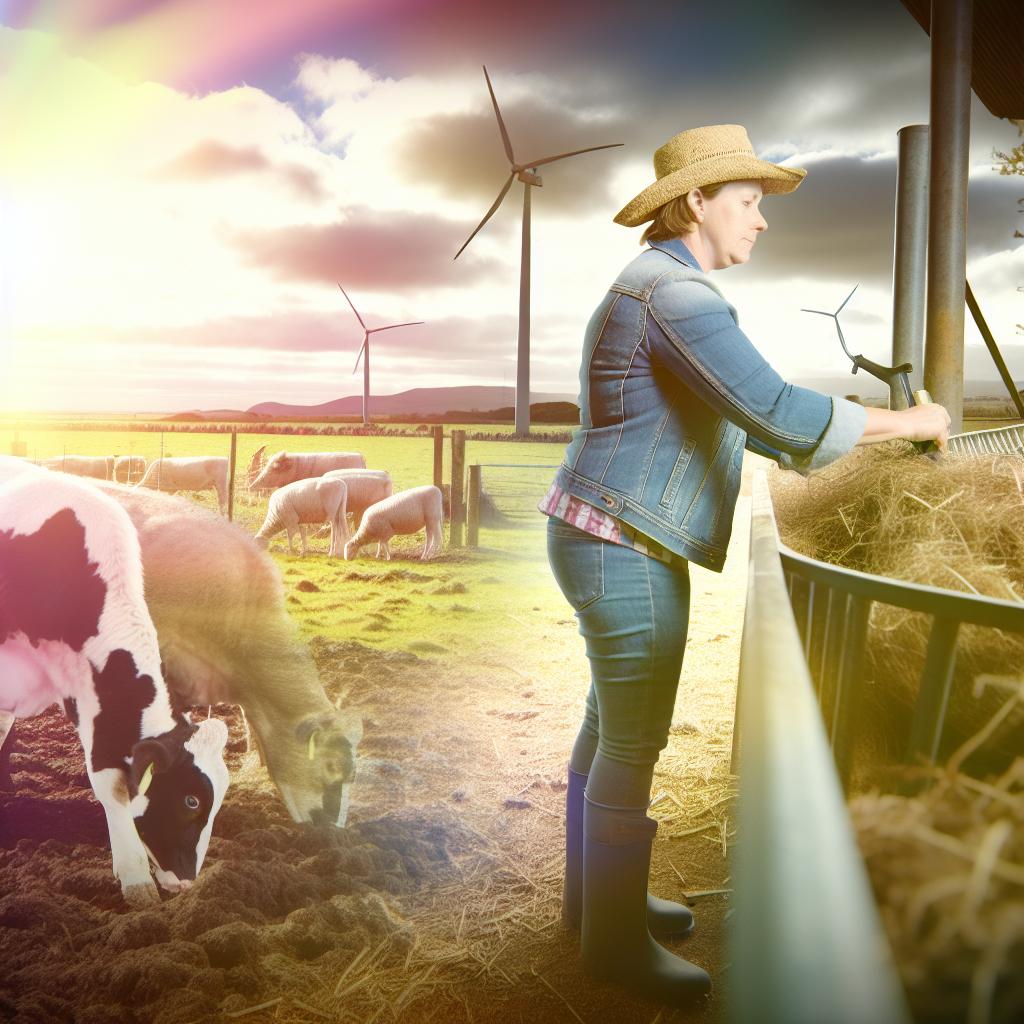
Case Studies: Successful Implementations of Sustainable Systems
Example from Green Meadows Farm
Green Meadows Farm provides an excellent case study in sustainable livestock management.
Located in Central Valley, their innovative practices demonstrate remarkable results.
They focus on rotational grazing to enhance pasture health.
This method improves soil fertility and reduces feed costs.
Consequently, the farm reported a 30% increase in milk production over two years.
Farm manager Sarah Thompson emphasizes the importance of adapting to the local environment.
Her team uses native plant species to boost resilience and biodiversity.
Success at Harmony Cattle Ranch
Harmony Cattle Ranch showcases effective water management alongside livestock sustainability.
They installed rainwater harvesting systems to reduce dependence on local aquifers.
This practice not only conserves water but also decreases runoff pollution.
Moreover, Harmony employs cover crops to enhance soil moisture retention.
The ranch reports improved pasture quality and cattle growth rates as a result.
Owner Michael Reyes stresses that long-term thinking drives their decisions.
Ultimately, these efforts yield higher profits and less environmental impact.
Innovations at Sunrise Poultry Farm
Sunrise Poultry Farm adopted organic and humane practices for poultry management.
They utilize mobile chicken coops to promote soil health and pest control.
This approach allows the chickens to forage naturally, enhancing their diet.
Showcase Your Farming Business
Publish your professional farming services profile on our blog for a one-time fee of $200 and reach a dedicated audience of farmers and agribusiness owners.
Publish Your ProfileConsequently, the farm sees a rise in egg production and better flock health.
Farm owner Lisa Johnson highlights the importance of community engagement.
She collaborates with local markets to promote sustainable eggs.
This fosters consumer awareness while boosting sales.
Lessons Learned from River Valley Sheep Grazing
River Valley has embraced methods to align with sustainable grazing practices.
They practice holistic grazing management to restore land productivity.
This system mimics natural herd behaviors to optimize land use.
As a result, pastures recover more quickly, and wildlife returns to their lands.
Owner Tom Sanders advocates for ongoing education and training for farmers.
He believes sharing knowledge will enhance the overall effectiveness of sustainable practices.
River Valley has become a model for local farmers seeking similar outcomes.
Challenges and Solutions in Adopting Sustainable Livestock Practices
Understanding the Barriers
Farmers face various challenges when adopting sustainable livestock systems.
Market volatility often discourages investment in sustainable methods.
Additionally, lack of awareness about sustainable practices is prevalent.
Financial constraints also play a significant role in decision-making.
Moreover, traditional practices are deeply entrenched in farming cultures.
Offering Solutions
Education is key to overcoming these barriers.
Training programs can help farmers learn sustainable methods.
Financial incentives can encourage the adoption of eco-friendly practices.
Local governments can offer subsidies or grants to support transitions.
Furthermore, farmer cooperatives can provide shared resources and knowledge.
Implementing Technology
Technology can enhance sustainable livestock management effectively.
For instance, precision farming tools optimize resource use.
These technologies can improve animal health and reduce waste.
Moreover, mobile apps can assist in tracking livestock data.
Consequently, informed decisions lead to higher productivity.
Building Community Awareness
Community engagement is essential to promote sustainable practices.
Local workshops can share success stories among farmers.
Social media campaigns can raise awareness about sustainability benefits.
Connecting with consumers highlights the importance of sustainable practices.
As a result, demand for sustainably-raised livestock can grow.
Promoting Policy Changes
Advocacy for supportive policies is crucial for lasting change.
Policymakers must recognize the importance of sustainable agriculture.
Engaging stakeholders can drive legislative action on sustainability.
This promotes funding for research and development in sustainable practices.
Additionally, implementing regulations for sustainable practices can standardize efforts.
Future Trends in Sustainable Livestock Management
Integration of Technology
Technology is transforming livestock management practices significantly.
Farmers increasingly use data analytics to optimize their operations.
Smart sensors now monitor animal health and environmental conditions.
Moreover, automated feeding systems enhance efficiency and animal welfare.
Showcase Your Farming Business
Publish your professional farming services profile on our blog for a one-time fee of $200 and reach a dedicated audience of farmers and agribusiness owners.
Publish Your ProfileThese advancements reduce labor costs and improve productivity.
Improved Genetic Selection
Genetic selection focuses on creating more resilient livestock breeds.
Farmers prioritize traits such as disease resistance and growth rates.
Furthermore, sustainable practices promote genetic diversity in herds.
This approach leads to healthier animals and reduces resource dependency.
Agroecological Practices
Agroecology emphasizes the relationship between agriculture and ecosystems.
Farmers adopt rotational grazing to enhance soil health and biodiversity.
This practice improves pasture quality while minimizing erosion.
Additionally, agroecological practices reduce the need for synthetic inputs.
Consumer Preferences and Market Demand
Consumer demand for sustainable products drives changes in livestock management.
Transparency in sourcing and production practices is increasingly important.
Farmers respond by implementing sustainable certifications and labels.
This trend encourages the production of ethically-raised meat and dairy products.
Focus on Animal Welfare
Animal welfare has become a focal point in livestock management.
Farmers strive to create better living conditions for their animals.
Practices include more spacious housing and access to the outdoors.
High welfare standards are linked to improved meat and dairy quality.
Regenerative Agriculture
Regenerative agriculture aims to restore ecosystems while producing food.
This approach enhances soil health through organic practices.
Farmers integrate livestock with crop production to create sustainable systems.
Such methods contribute to carbon sequestration and reduced greenhouse gases.

